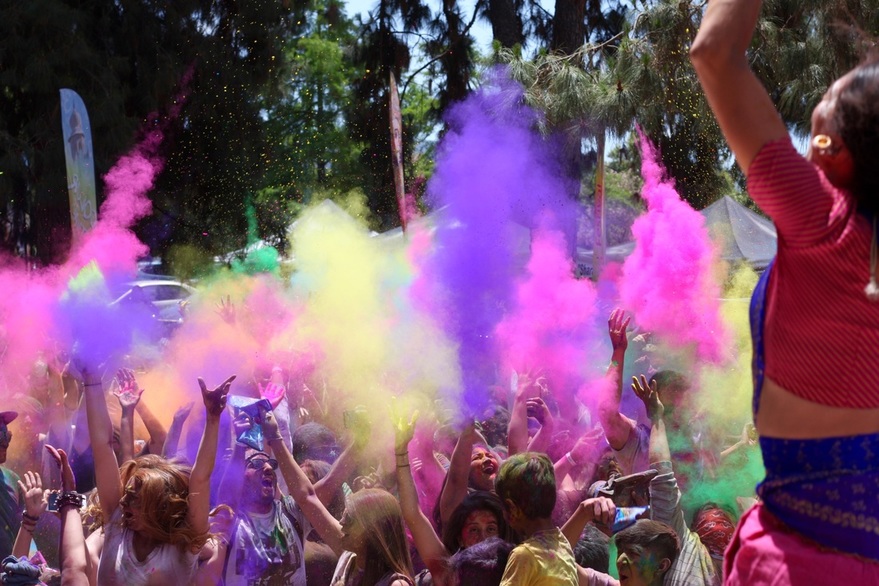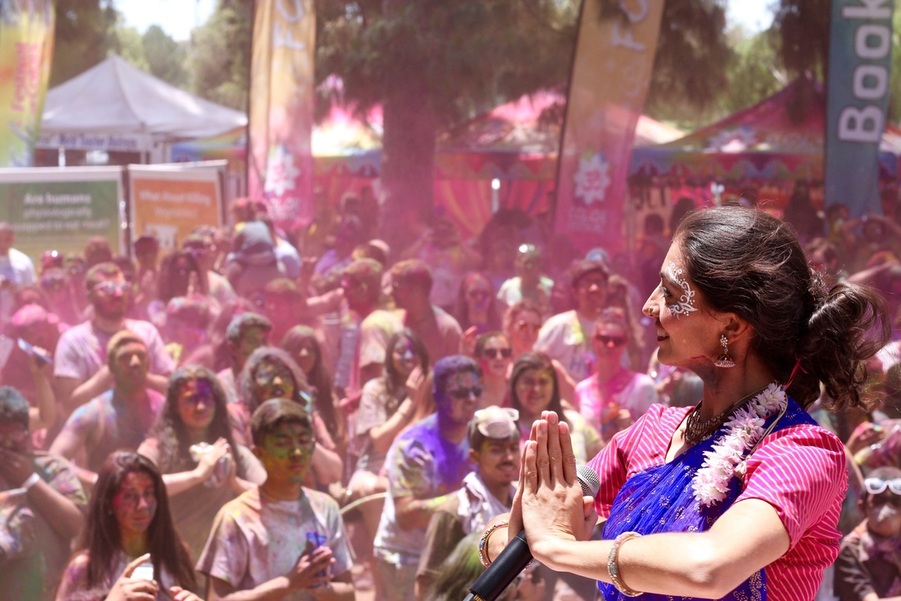- About Us
- Features
- Archive
- Videos
- The Secret success of Elmer Street
- Flying High From Below: LA's Fernando Martin
- Lip Candy
- Wafa Jaffal & her journey in Post Production!
- Guide to making a delicious arepas for your meal by Adolfo Can
- Waterworld
- Khanh's Kitchen
- From Las Vegas to LA
- Lighting the World Around Us: An Interview with Angela Gundelfinger
- Eating Disorder Healthcare: Mishna Erana Hernandez
- Meet Our New Staff!
- Meet Carlos Chavez!
- Meet Nicole Favors
- Meet David Petrosyan
- Meet Brittney Strong
- Meet Kaci Theros
- Meet Katrina Molle
- Hopping into the year of the Rabbit: Alhambra’s Lunar New Year Celebration
- 2023 Solar Decathlon
- Depop: A Circular Fashion Community
- Inside the Afro-Mexican Identity
- Meet Mimi Chao: Magnificent Creator of Mimochai
- Who’ll be the top dog? Let’s check out the annual Corgi Winter Nationals
- The Fine Line That Connects Skincare to Culture: Asian Skincare Routines
- One Of The Key Ways To Protect The Oceans Is To Rethink What We Are Doing On Land
- The Fine Line That Connects Skincare to Culture: Asian Skincare Routines
- Growing Up With a Mixed Family Made Me Confident in Being Afro-Latina
- The Benefits of Shopping At Your Local Farmers’ Market
- Discovering Voice: An Interview With Nicole Favors
- Short Form: New Creative Producing Track At Woodbury University
- Housing Crisis in Los Angeles
- How Minimalism Can Benefit Your Life as a Student
- "Insights from Fashion Marketing Chair and Forecasting Expert Wendy Bendoni on the Evolving Landscape of Fashion Consumption and Sustainability"
- The Gun Violence Issue in America
- From the Court to Console: An Interview With Tim Parham
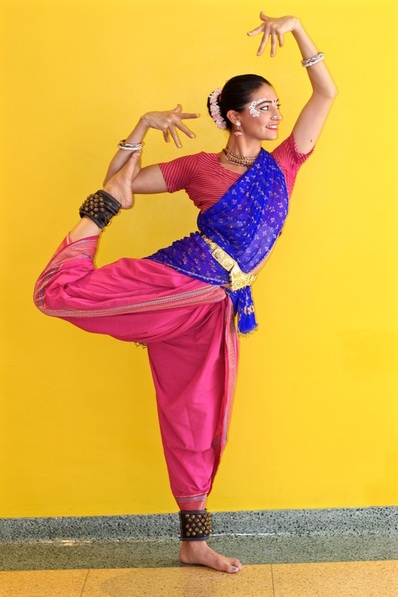
Clouds of colorful dust explode in the air as a sea of people celebrate the Festival of Colors in the San Fernando Valley. Minutes before hitting the stage at the Festival of Colors, Malini Taneja is getting ready by doing mediation and yoga. Her energy remains calm and centered as she walks towards the stage. Malini is wearing a pink and blue dance costume that is adorned by flowers in her hair, flowers painted on her cheeks, and other embellishments that make Malini stand out in a crowd of people donning white clothing. It is now seconds before her performance begins, and in the blink of an eye Malini is center stage entertaining the festival crowd and the crowd instantly feeds off her energy.
Los Angeles based Malini Taneja is a trained classical Indian and Bollywood dancer who has been dancing for over 10 years. She trained with Viji Prakash in LA with her Shakti Dance School and company. Watching Malini dance is an experience to behold as her passion for dance flows through her every movement she makes. Malini leads a colorful life as a dancer, a singer, as a Festival of Colors performer, and as an individual who hopes to move people. She describes her routine before a performance as: “yoga for body, mediation for my mind and soul”.
What sparked your interest in dancing?
"I have always loved dance. I did many different styles growing up but I really took to Bharatanatyam, a south Indian classical dance form. It is a very traditional and structured style, kind of like the ballet of India if you will. But now I’m getting back to my childhood roots of exploring dance, because as a kid I would just dance what I felt and did improvisation all the time. Being half Indian, I would see Indian folk dance, classical Indian dance and Bollywood, and I would always watch hip hop, contemporary and other dance styles in Los Angeles and Toronto where I had grown up. So now I am in a phase in my dancing where I want to break out more of that traditional realm and mix it up."
Los Angeles based Malini Taneja is a trained classical Indian and Bollywood dancer who has been dancing for over 10 years. She trained with Viji Prakash in LA with her Shakti Dance School and company. Watching Malini dance is an experience to behold as her passion for dance flows through her every movement she makes. Malini leads a colorful life as a dancer, a singer, as a Festival of Colors performer, and as an individual who hopes to move people. She describes her routine before a performance as: “yoga for body, mediation for my mind and soul”.
What sparked your interest in dancing?
"I have always loved dance. I did many different styles growing up but I really took to Bharatanatyam, a south Indian classical dance form. It is a very traditional and structured style, kind of like the ballet of India if you will. But now I’m getting back to my childhood roots of exploring dance, because as a kid I would just dance what I felt and did improvisation all the time. Being half Indian, I would see Indian folk dance, classical Indian dance and Bollywood, and I would always watch hip hop, contemporary and other dance styles in Los Angeles and Toronto where I had grown up. So now I am in a phase in my dancing where I want to break out more of that traditional realm and mix it up."
|
What is your favorite Bollywood dance move?
"Bollywood is an evolving modern fusion dance. Its movements have roots in so many styles including hip hop, salsa, Indian folk, Indian classical. The cool thing about Bollywood is you can be constantly making new moves. That’s what I like about it. At the core I am a classical dancer so I always bring some of those elements into Bollywood. The main thing that I love about Bollywood and most Indian dance styles in general is the storytelling. I love telling a story and showing the emotion to the audience, not just being beautiful technically, but to make them move, cry, laugh, and feel it." |
|
Do you consider dance a universal language?
"Yes, one hundred percent. Everyone can feel emotion. There's not an African emotion, an Indian emotion, or an American emotion. Emotions are emotions. Storytelling is universal. We all love a good story, doesn't matter what language."
"Yes, one hundred percent. Everyone can feel emotion. There's not an African emotion, an Indian emotion, or an American emotion. Emotions are emotions. Storytelling is universal. We all love a good story, doesn't matter what language."
"Dance should express emotion and emotion is a human thing. Everyone can feel emotion. Dance is universal."
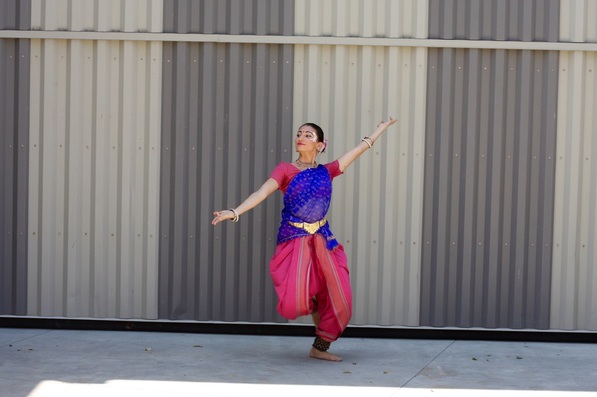
You are currently wearing bells around your ankles, do the bells represent something?
"Your teacher gives you ankle bells after you have trained for years and are about to perform your debut solo performance, which can be as long as 3 hours. You definitely have to train for it. Once that is done then you kind of get your black belt of classical dance, the bells. Then you can expand as an artist and learn more because you've hit a milestone. You’re still a student but you are progressing. Just as in martial arts, receiving your black belt is just the beginning because really if you want to become a master it takes years, years, and years. It is not just about the form, it’s about the discipline, and most importantly the inner journey."
How would you describe your dance mentor?"My dance teacher, who is sixty, there's so much depth in her dance. I still have work to do. Classical or folk they say is like a wine, the older it is the better it tastes. It is not something that you have to be young to do. You can be any age, because as you get older you can share your life experience in your dance. You might not do fancy, crazy moves but you will be showing that emotion and that is what dance is supposed to convey."
What would you say to the younger version of you?
"Don’t be afraid to try something different even if other people don't like it and be you because if you're only trying to be someone else...it doesn't work."
"Your teacher gives you ankle bells after you have trained for years and are about to perform your debut solo performance, which can be as long as 3 hours. You definitely have to train for it. Once that is done then you kind of get your black belt of classical dance, the bells. Then you can expand as an artist and learn more because you've hit a milestone. You’re still a student but you are progressing. Just as in martial arts, receiving your black belt is just the beginning because really if you want to become a master it takes years, years, and years. It is not just about the form, it’s about the discipline, and most importantly the inner journey."
How would you describe your dance mentor?"My dance teacher, who is sixty, there's so much depth in her dance. I still have work to do. Classical or folk they say is like a wine, the older it is the better it tastes. It is not something that you have to be young to do. You can be any age, because as you get older you can share your life experience in your dance. You might not do fancy, crazy moves but you will be showing that emotion and that is what dance is supposed to convey."
What would you say to the younger version of you?
"Don’t be afraid to try something different even if other people don't like it and be you because if you're only trying to be someone else...it doesn't work."
“You have to definitely find your individual artist within you, and work hard, train hard.”
How did you get involved in the Festival of Colors?
"I was dancing with the Kirtaniyas. They are a band that do Indian devotional music with electronic music and acoustic instruments. They asked me to dance with them at the Festival of Colors back in 2013. They've been my friends for a long time and then as they moved on from the festival the organizer, Caru, asked me to do my own set. So, I not only dance but also I sing and get the crowd going. I get them to shout, scream, laugh, and hug each other. I show them some yoga and dance moves. It’s a whole package now, more than just dancing."
"I was dancing with the Kirtaniyas. They are a band that do Indian devotional music with electronic music and acoustic instruments. They asked me to dance with them at the Festival of Colors back in 2013. They've been my friends for a long time and then as they moved on from the festival the organizer, Caru, asked me to do my own set. So, I not only dance but also I sing and get the crowd going. I get them to shout, scream, laugh, and hug each other. I show them some yoga and dance moves. It’s a whole package now, more than just dancing."
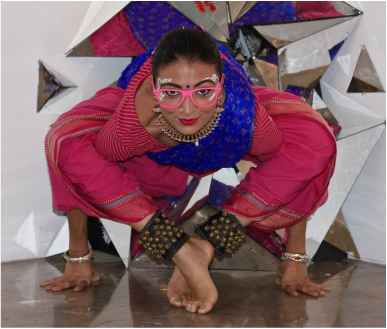
What does Holi mean to you?
"Holi is a celebration of spring originally. It's a celebration of love, of good over evil. At the Festival of Colors, all the colors that we throw on each other represent how we're all very colorful people with different backgrounds. We have our unique individuality but we can all come together and not see those differences as a bad thing but enjoy that colorfulness. So, it is really about unity in diversity.”
Do the individual colors represent something something?
"They are moods and relationships like happiness, friendship, lovers, laughter---all the different experiences of life."
How does symbolism affect your dancing?
"In classical Indian dance, every hand gesture is aesthetically beautiful but also has a deeper meaning behind it. There's constant layers in the dance where people can just enjoy the beauty of the dance but also connect to the story going on and even further by thinking about the philosophical concepts being expressed in the dance as well."
"Holi is a celebration of spring originally. It's a celebration of love, of good over evil. At the Festival of Colors, all the colors that we throw on each other represent how we're all very colorful people with different backgrounds. We have our unique individuality but we can all come together and not see those differences as a bad thing but enjoy that colorfulness. So, it is really about unity in diversity.”
Do the individual colors represent something something?
"They are moods and relationships like happiness, friendship, lovers, laughter---all the different experiences of life."
How does symbolism affect your dancing?
"In classical Indian dance, every hand gesture is aesthetically beautiful but also has a deeper meaning behind it. There's constant layers in the dance where people can just enjoy the beauty of the dance but also connect to the story going on and even further by thinking about the philosophical concepts being expressed in the dance as well."
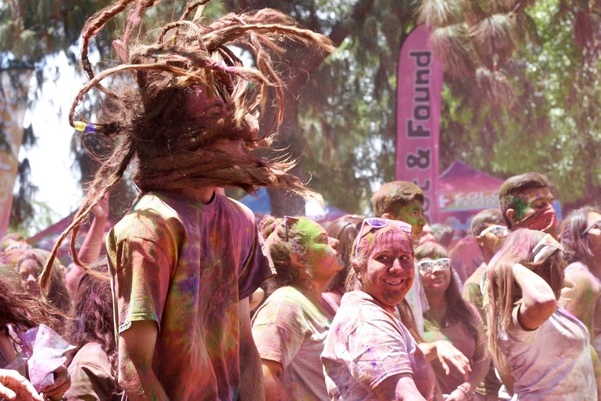
How many times have you performed at the Festival of Colors? Has it changed throughout the years?
"Four years. I’ve probably done about 35 festival by now. The festival has changed in the sense there's been more and more people coming. People are realizing that this is such a fun way to celebrate life and be together. I don't know if you've noticed but there are now color runs everywhere, color raves, color this, color that, and that's all because of this organizer who started this festival in the 90's. He's the first one to really popularize Holi, the festival of colors from India, in America and now it's spread all over. That's what's changed. Now people know what the festival is. Before no one knew about it except Indians."
Which has been the most exciting project that you have been involved in?
"There's been quite a few, I will mention two. One is a production that I did two years ago that is happening again this summer at the Ford Theater in Hollywood called Mara. It's live jazz and Carnatic music playing live while a group of us dance Bharatanatyam with influence from contemporary dance. It was really fun because it has innovative cutting-edge choreography and emotional and philosophical concepts. The other thing I'm excited about is that I'm starting to branch out into making music. I'm making an electronic EP with my friend DJ Makhana that I will be slowly releasing single by single. That's been really fun."
How would you define success in your career?
"I define my success by making people want to dance, not necessarily professionally but just to dance because I believe everyone should dance in their life because it makes you a happier person."
"Four years. I’ve probably done about 35 festival by now. The festival has changed in the sense there's been more and more people coming. People are realizing that this is such a fun way to celebrate life and be together. I don't know if you've noticed but there are now color runs everywhere, color raves, color this, color that, and that's all because of this organizer who started this festival in the 90's. He's the first one to really popularize Holi, the festival of colors from India, in America and now it's spread all over. That's what's changed. Now people know what the festival is. Before no one knew about it except Indians."
Which has been the most exciting project that you have been involved in?
"There's been quite a few, I will mention two. One is a production that I did two years ago that is happening again this summer at the Ford Theater in Hollywood called Mara. It's live jazz and Carnatic music playing live while a group of us dance Bharatanatyam with influence from contemporary dance. It was really fun because it has innovative cutting-edge choreography and emotional and philosophical concepts. The other thing I'm excited about is that I'm starting to branch out into making music. I'm making an electronic EP with my friend DJ Makhana that I will be slowly releasing single by single. That's been really fun."
How would you define success in your career?
"I define my success by making people want to dance, not necessarily professionally but just to dance because I believe everyone should dance in their life because it makes you a happier person."
"I define my success by spreading happiness."
To visit the Festival of Colors, go here.
Links |
7500 |
|
